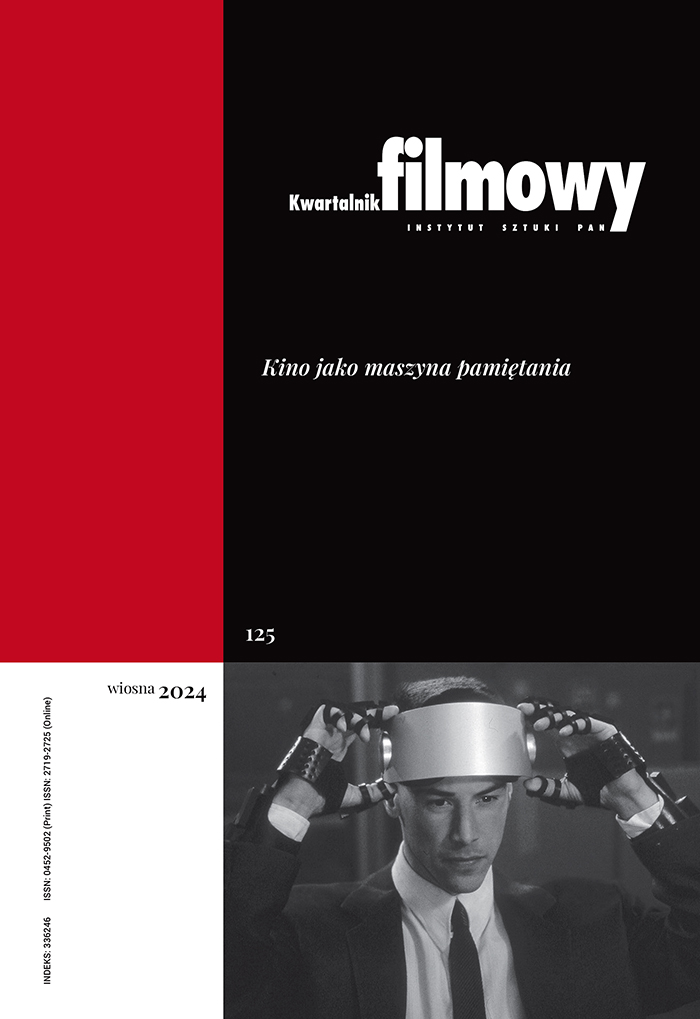Woody Allen’s Play with Hollywood Conventions
Abstract
Teresa Rutkowska writes about Woody Allen’s ironic and nostalgic ties with the tradition of Hollywood’s film genres. In his movies, Allen places the elements encouraging the viewer to join a peculiar intertextual game. He uses direct or indirect visual and verbal quotes from the classical movies of the Golden Era of Hollywood. Such references are not only made in The Purple Rose of Cairo, or Play it Again, Sam (a play and film written by and starring Woody Allen and directed by Herbert Ross), where the story centres on how cinema could change the lives of film heroes. Such references can only be seen in all his movies. Parodies of various genres seem to be of special interest; Sleeper, a parody of science-fiction genre, Manhattan Mystery Murder - in which you can find elements of the crime mystery movie or Everyone Says I Love You in which he ironically revives the formula of the classical musical.
Keywords:
Woody Allen, Hollywood, genre cinema, ironyReferences
Nie dotyczy / Not applicable
Google Scholar
Authors
Teresa Rutkowskakwartalnik.filmowy@ispan.pl
Institute of Art, Polish Academy of Sciences Poland
Editor-in-chief of Kwartalnik Filmowy; translator. She is employed at the Department of Cultural Anthropology, Film and Audiovisual Arts at the Institute of Art of the Polish Academy of Sciences (Warsaw). She publishes articles in Kwartalnik Filmowy and book reviews in the monthly magazine Nowe Książki. Her areas of interest include the film narration and the relationship between image and word in film.
Statistics
Abstract views: 1051PDF downloads: 41
License
Copyright (c) 2006 Teresa Rutkowska

This work is licensed under a Creative Commons Attribution 4.0 International License.
The author grants the publisher a royalty-free non-exclusive licence (CC BY 4.0) to use the article in Kwartalnik Filmowy, retains full copyright, and agrees to identify the work as first having been published in Kwartalnik Filmowy should it be published or used again (download licence agreement). The journal is published under the CC BY 4.0 licence. By submitting an article, the author agrees to make it available under this licence.
In issues from 105-106 (2019) to 119 (2022) all articles were published under the CC BY-NC-ND 4.0 licence. During this period the authors granted a royalty-free non-exclusive licence (CC BY-ND 4.0) to use their article in „Kwartalnik Filmowy”, retained full copyright, and agreed to identify the work as first having been published in our journal should it be published or used again.
Most read articles by the same author(s)
- Teresa Rutkowska, Table of Contents , Kwartalnik Filmowy: No. 105-106 (2019): Cinema and Political Transformation
- Teresa Rutkowska, To Watch and Listen , Kwartalnik Filmowy: No. 120 (2022): Film Culture
- Teresa Rutkowska, Table of Contents , Kwartalnik Filmowy: No. 109 (2020): Architectural Space in Film
- Teresa Rutkowska, Table of Contents , Kwartalnik Filmowy: No. 108 (2019): Film Production and Distribution
- Teresa Rutkowska, Bolesławski Yours and Ours , Kwartalnik Filmowy: No. 109 (2020): Architectural Space in Film
- Teresa Rutkowska, Table of Contents , Kwartalnik Filmowy: No. 112 (2020): Polish Documentary, Polish Animation
- Teresa Rutkowska, The Professor , Kwartalnik Filmowy: No. 113 (2021): Film and Technology
- Teresa Rutkowska, Editorial , Kwartalnik Filmowy: No. 49-50 (2005): Ideology and Film
- Teresa Rutkowska, Table of Contents , Kwartalnik Filmowy: No. 125 (2024): Cinema as a Memory Machine
- Teresa Rutkowska, Table of Contents , Kwartalnik Filmowy: No. 129 (2025): Trauma











